<< Learning Center
Media Accessibility Information, Guidelines and Research
Educational Captioning: Teachers Share Their Experiences
The following statements are teachers' testimonials of utilizing captioned educational media from the Described and Captioned Media Program (DCMP). Each teacher relates their experience using captioned media as a teaching tool in the classroom and why this accessible media is important in the education of students who are deaf or hard of hearing.
Jamie Moon
Oklahoma School for the Deaf

I am writing on behalf of myself as a deaf person, the deaf and hard of hearing students, and the vital role of the Described and Captioned Media Program in our everyday lives. I grew up watching captioned films as part of my education training both at the oral school for the deaf and in mainstreamed programs, and it was personally a very important part of my educational background. I am now a teacher for deaf and hard of hearing children at a residential school, and from my personal point of view as a deaf person and a teacher, I feel the captioning program is essential for people and students of all ages with hearing loss.
Being deaf and living without sound takes away many things in our everyday living, but due to captioning, we can depend on words and information to help us understand what we are missing in our culture today. To take this away is not an option for us. We have videos to describe and give colorful images to help us enhance our understanding through reading comprehension and to help improve our reading skills. It is imperative for our young deaf and hard of hearing children to grasp the importance of the pictures, the motions, and to gain the word concepts along with the reading.
As a secondary teacher, my goal is to find ways for my students to learn more with supplemental means such as hands-on experience, information, and captioned videos. It is important for my students to have the responsibility to read, to correlate, to recognize, and to understand the meaning behind the stories being told. For some students, just reading a story is not enough, and I need to bring more knowledge and accessibility to them. I feel that I have done my job when I can see their eyes flutter as they see the words, or when I can see the expression on their faces when they get the concept and the meaning.
My students have become independent learners by watching captioned videos to help them understand the stories. As a teacher, one of the most rewarding moments is watching your deaf or hard of hearing students become independent in a hearing world.
The Described and Captioned Media Program has always been, and I hope will always be, an important part of my life as a student in the past and as a teacher now. I feel this program is imperative for me as a deaf person, for my students' education process, and for the future success of the deaf and hard of hearing world.
Scharla Becker
Oklahoma State School for the Deaf

My name is Scharla Becker, and I am a graduate from the University of Nebraska at Lincoln (UNL). I have a bachelor's in science education and a master's in special education/deaf education. In 1997 I began working at the Oklahoma State School for the Deaf (OSD). The first 6 years I worked in the special needs department teaching multihandicapped students. More recently I have been teaching in the middle school/high school science department. Classes I teach include general science, biology, chemistry, physics, and anatomy.
As an educator of the deaf/hard of hearing, I find the Described and Captioned Media Program to be a very useful tool within my science classes. Captioned media provides a vital visual link to various concepts that students often struggle with.
I use captioned media primarily in three different ways. The method I choose depends on the topic and the needs of the class. Regardless of which choice of method, I always briefly introduce the captioned media prior to watching.
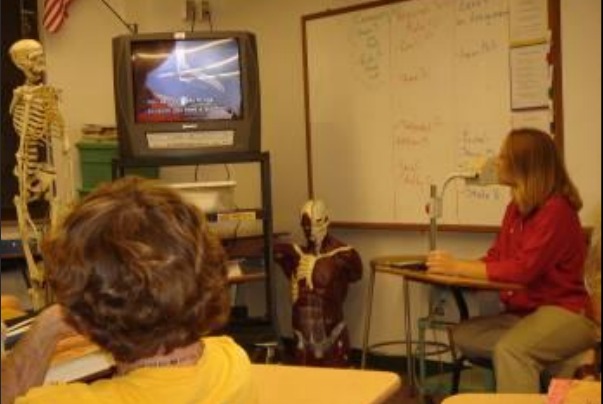
Method One
I allow students to watch the captioned media with no interruptions or interpretation. Then at the end of the program, I ask for questions and respond to those questions and/or clarify as needed. After the question, answer, and clarification, I then determine if another viewing is needed. If so, I then opt for method three as a follow up.
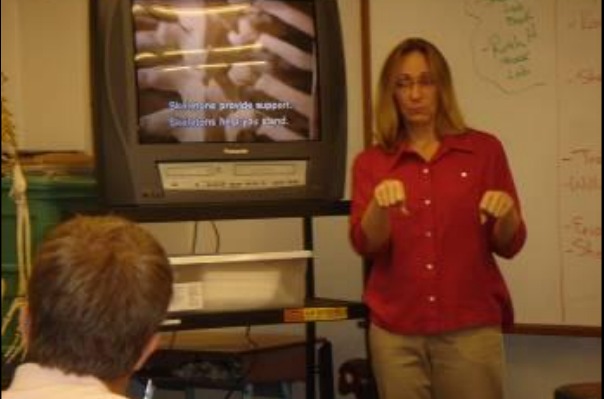
Method Two
I allow students to ask questions during the showing of the captioned media. As students ask questions, I then pause the media and answer or clarify the topic at hand. If needed, I will rewind the media to aid in my clarification.
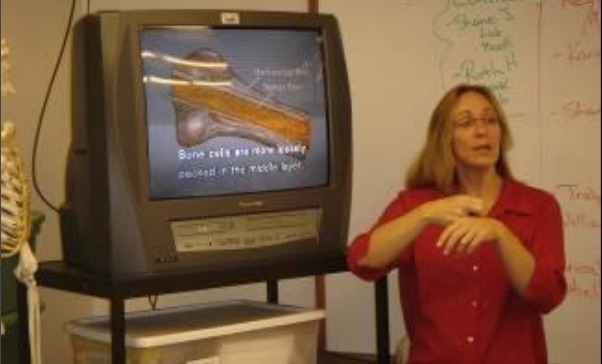
Method Three
I allow students to watch as I interpret. Then at the end I accept questions followed by discussion and clarifications as needed. In this situation I evaluate the questions and decide whether to allow for another viewing of the captioned media. I then would opt to use method one as a follow-up.
One final bonus regarding the use of the Described and Captioned Media Program is the lesson guides which are sometimes provided as online supplements. On occasion I also use these bonus tools in my classes. A word of caution, do not expect deaf/hard of hearing students to be able to watch the media and/or watch the interpreter while simultaneously attempting to complete the worksheet. Remember the eyes and hands rule, not the ear!
Debi Knuth
Montana School for the Deaf and the Blind
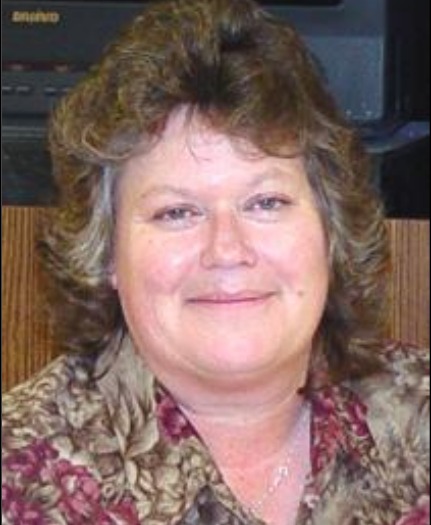
I have been an educator of the deaf and hard of hearing for 30 years. I have used captioned films ever since DCMP furnished reel-to-reel movies using an old 16mm movie projector. That seems like ancient history today; however the quality of the videos continues to be an excellent classroom resource. The variety of subjects has been outstanding and continues to grow every year. DCMP videos are one of the finest tools I use in my classroom in all subject areas from language/literature to the social sciences and mathematics to social problems and current issues/events.
Using DCMP's captioned videos, I am able to interpret what is being printed on the screen as well as emphasize points that have been covered in class. The students are able to interact with the movie, locating specific vocabulary and seeing the vocabulary in content form.
As we view the movie, I often stop and have a discussion, either relating to what we have covered in class or get ideas, or to ask questions to see if the students are following. I use what is on the screen to make a point or follow through with what has been previously discussed.
Student involvement is very important when working with kids. DCMP videos are a key component for stimulating and enhancing student learning. The topics spark interest from the students which lead to individual thinking and good discussions. The captioned films give the students the opportunity to become involved in situations they may never be able to personally experience.
I use the lesson guides as a transparencies for vocabulary identification as well as reading for meaning. The lesson guides also provide good summary questions that I use for evaluating the students' attention and connection to class work. The worksheets provided in some of the films are very good for movie review. The pictures and other graphics (e.g., maps or diagrams) relate to what is being covered in class discussions and other hands-on activities. Often times the movie provides activities that can actually be seen, and then we can have the same activity performed in class for better comprehension.
DCMP provides high-interest films that sometimes I forget I am suppose to be teaching. I get involved in the films, too! It is advisable to preview the film before showing your students. They are educational as well as entertaining. Captioned media is a powerful tool to complement the hundreds of subject areas a teacher covers in class. It is a vital addition to any curriculum.
Brent Behrens
Oklahoma School for the Deaf
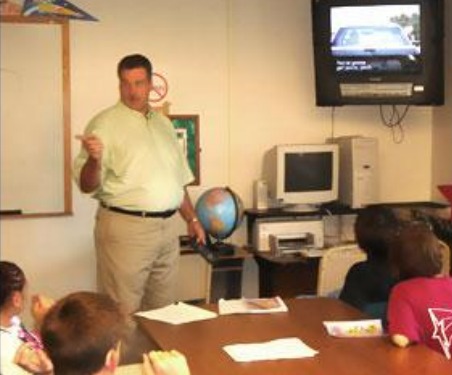
I have been using captioned educational media in my classrooms for about 20 years. As time has passed, the quality and quantity of films and topics has improved greatly. This visual resource has been a real blessing for the deaf education world. Through this medium, deaf students have been able to correlate the pictures on the screen with the language shown, and that alone has increased their understanding of not only what is happening in the film, but it has also helped to increase their language vocabulary. These films have really opened up our world to the deaf because of the variety and quality of the topics available.
Educational methods vary from teacher to teacher. Myself, I prefer in general to use the film on a pause-andcontinue method. As a concept was, or is going to be shown on the screen, I will point out the picture, and the language used in the captioning, and then correlate that with American Sign Language so the students have maximum opportunity to gain understanding.
In the pictures, you will see me with the film on still frame while we discuss the concept at hand. In this case, we are discussing "road rage" in the driver education class. This particular film does a great job of dramatizing the emotions that can produce dangerous drivers.
In closing, I would add that over the years, in all the different subjects I have taught, there have always been educational films that I could incorporate into each class to enhance the learning process. Thank you for having such a great tool for the educators and the students.
About the DCMP
The Described and Captioned Media Program (DCMP) provides services designed to support and improve the academic achievement of students who are blind, visually impaired, deaf, hard of hearing, or deaf-blind. These services include (1) a library of free streaming described and captioned educational media; (2) a Learning Center of related to educational media access; and (3) eLearning Resources for professional development. There are no user-registration or service fees. The DCMP is funded by the U.S. Department of Education and administered by the National Association of the Deaf.
Tags:
Please take a moment to rate this Learning Center resource by answering three short questions.
